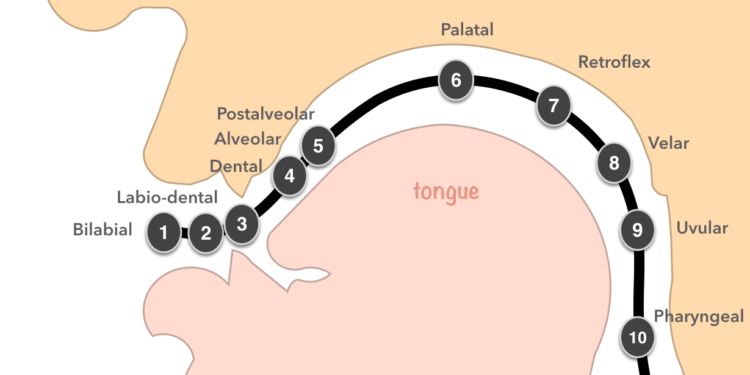In the intricate landscape of language acquisition, the phenomenon of Final Consonant Deletion (FCD) stands as a notable marker of early speech development. It is a process wherein children simplify words by omitting the final consonant sound(s), providing valuable insights into the complexities of phonological development.
This article seeks to delve deeper into the realm of FCD, exploring its nuances, implications, contributing factors, diagnostic approaches, therapeutic interventions, and the significance it holds in the broader context of speech and language development.
Understanding Final Consonant Deletion
- Definition of Final Consonant Deletion: Final Consonant Deletion is a phonological process characterized by the omission of the final consonant sound(s) in a word, resulting in a simplified pronunciation. Examples: “ca” for “cat” or “daw” for “dog”.
- Common Instances: FCD often manifests during the early stages of speech development in children as they navigate the complexities of language acquisition.
Significance of Final Consonant Deletion
- Linguistic Implications: FCD holds significance in understanding the phonological aspects of language and can impact the overall intelligibility and communicative effectiveness of a child’s speech.
- Developmental Milestones: The presence or absence of FCD can serve as a developmental milestone, indicating typical speech development or potential language delays warranting further assessment.
Manifestations of Final Consonant Deletion
- Phonetic Variations: The manifestation of FCD can vary across languages and dialects, resulting in diverse phonetic realizations of words.
- Word Complexity: The occurrence of FCD may be influenced by factors such as the complexity of the word and the phonological structure, with more complex words potentially eliciting a higher frequency of deletion.
- Contextual Influence: Environmental factors, such as linguistic input and social interactions, can also influence the occurrence and persistence of FCD in children.
- Age of Onset and Resolution: FCD typically emerges in the early stages of speech development and tends to resolve as children refine their articulatory skills, though individual variability exists.
Contributing Factors to Final Consonant Deletion
- Phonological Processes: FCD is often regarded as a natural part of the phonological processes that children undergo during language acquisition, reflecting their evolving understanding and production of speech sounds.
- Motor Skills: Underdeveloped or delayed motor skills can impede the accurate articulation of final consonant sounds, contributing to the occurrence of FCD in children.
- Cognitive Factors: Cognitive abilities, including auditory processing and memory, play a role in a child’s ability to perceive and produce speech sounds accurately.
- Language Exposure: The quantity and quality of language input received by children can influence their phonological development, potentially affecting the occurrence of FCD.
- Socioeconomic Factors: Environmental factors such as socioeconomic status can impact a child’s access to language-rich experiences, which may influence the development and persistence of FCD.
Diagnostic and Therapeutic Approaches
- Speech-Language Assessment: Comprehensive evaluation by a qualified speech-language pathologist is essential for accurately assessing the presence and severity of FCD, along with identifying any underlying speech or language difficulties.
- Intervention Strategies: Tailored therapeutic interventions focusing on phonological awareness, articulation techniques, and auditory discrimination can effectively address FCD and promote accurate speech production.
- Multidisciplinary Collaboration: Collaboration with other professionals, such as pediatricians, psychologists, and educators, can provide holistic support and intervention for children with FCD, addressing any underlying contributing factors.
- Family-Centered Approach: Involving families in the assessment and intervention process empowers caregivers to support their child’s communication development within naturalistic settings, fostering generalization of skills and long-term progress.
- Technology Integration: Utilizing technology-based tools and resources, such as speech therapy apps and virtual platforms, can enhance therapeutic interventions and facilitate home practice for children with FCD.
Educational and Social Implications
- School-Based Support: Educators can play a vital role in identifying children with FCD and implementing strategies to support their communication needs within the classroom setting.
- Peer Interaction: Children with FCD may experience challenges in social interactions due to speech intelligibility issues, highlighting the importance of fostering peer understanding and acceptance.
- Academic Performance: Addressing FCD early on can positively impact a child’s academic performance, as clear speech facilitates comprehension and participation in educational activities.
Future Directions and Research
- Longitudinal Studies: Long-term follow-up studies tracking the speech development of children with FCD can provide valuable insights into the natural history of the condition and factors influencing its persistence or resolution.
- Intervention Efficacy: Further research is needed to evaluate the effectiveness of different therapeutic approaches and identify optimal intervention strategies for addressing FCD in children.
- Technology Advancements: Advances in technology, such as speech recognition systems and teletherapy platforms, hold promise for enhancing assessment and intervention for children with FCD, particularly in remote or underserved areas.
Conclusion
Final Consonant Deletion serves as a significant phenomenon in the landscape of early speech development, offering valuable insights into the intricate processes of language acquisition. While typically a transient phase in a child’s speech development, persistent FCD may warrant further attention and intervention to support optimal communication outcomes. By understanding the manifestations, contributing factors, and therapeutic approaches associated with FCD, professionals and caregivers can collaborate effectively to nurture and enhance a child’s speech and language skills, paving the way for successful communication and social interaction.







